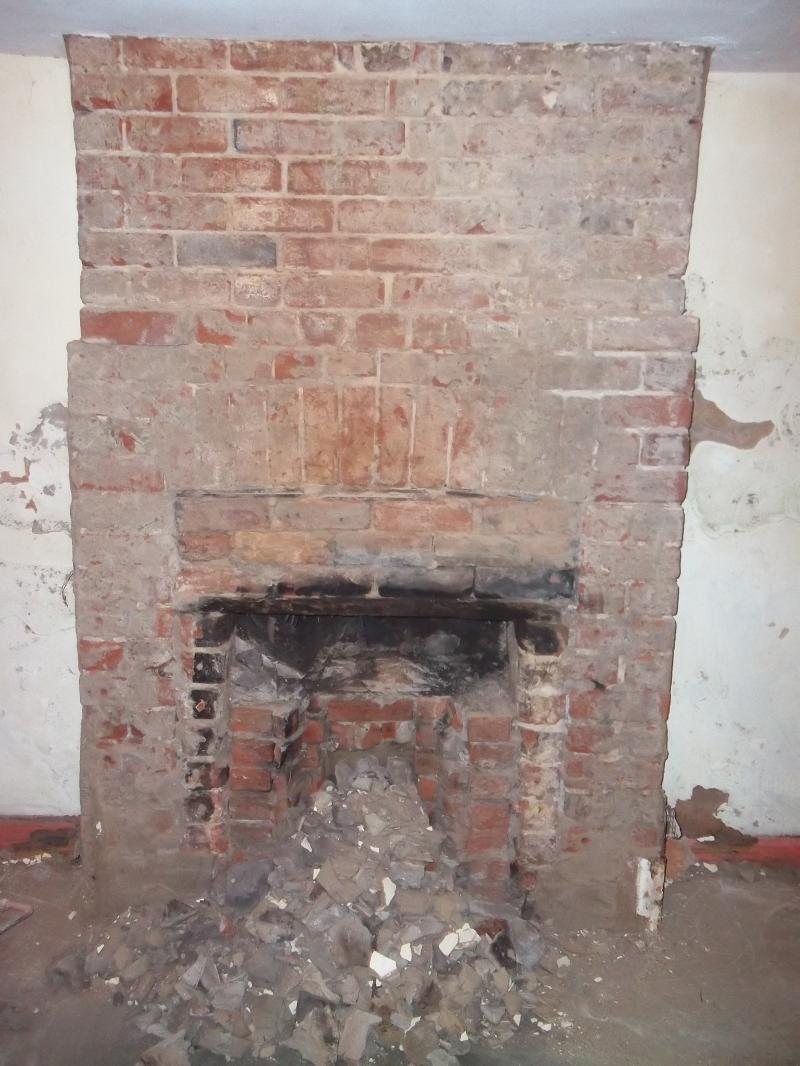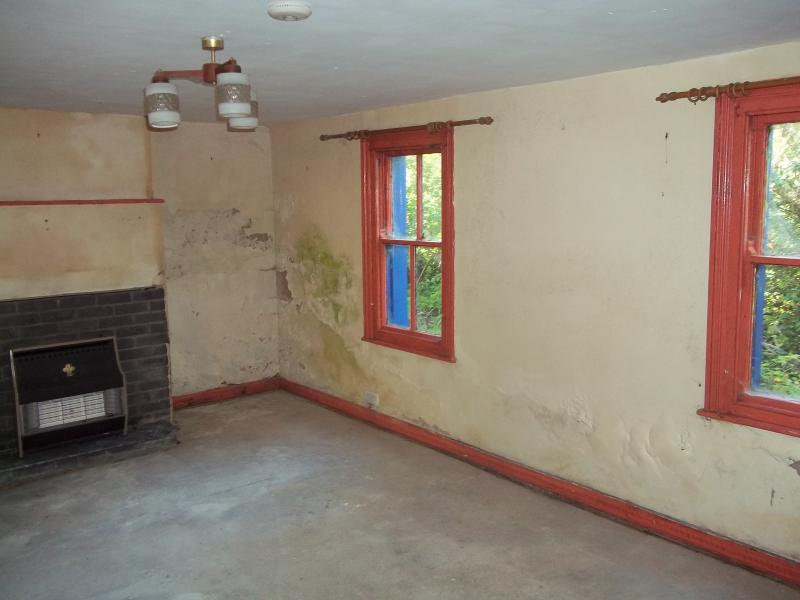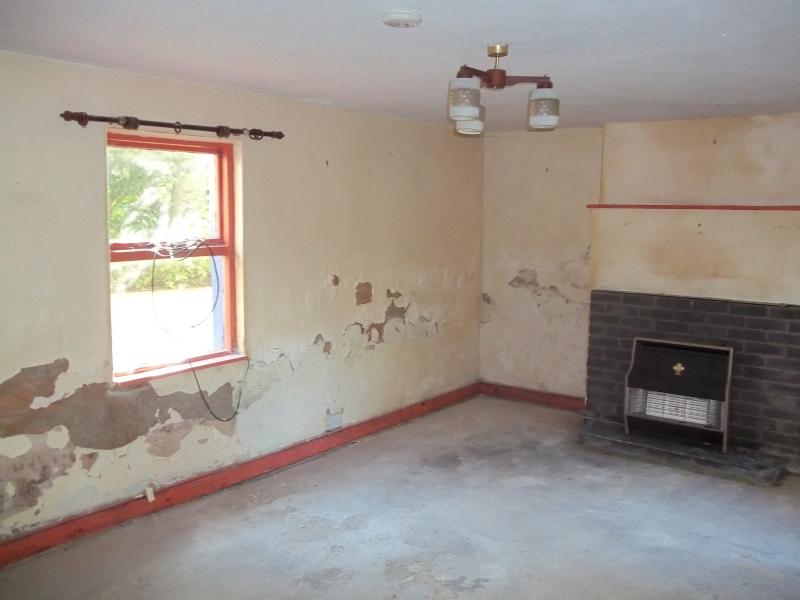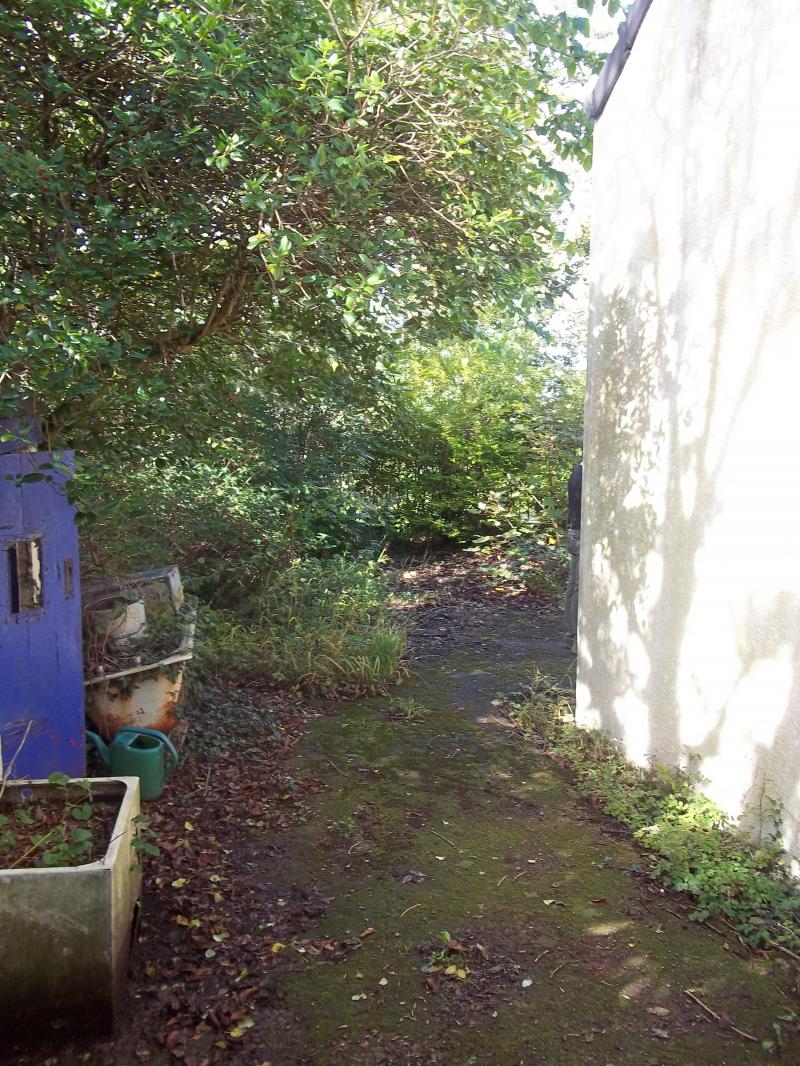First of all, Hi all, new to the forum.
We recently bought a 1890's gatekeepers house which has been extended (some ago, probably 1900's) to the rear with a solid brick construction (full height with suspended timber upper elevation) and to the side with a lean-to stone-built kitchen.
I suspect we'll be using this forum a lot to pick the collective brain of DIYnot.com, so thanks in advance.
We are tackling this project room by room and we are starting with the largest room - the rear extension lower level, which will be our main lounge when completed. the upper level is in good condition so we'll be living in there for the time being.
All the old plaster is coming off (damp damaged from being vacant and blocked guttering etc) and we'll remove all back to original brick work. I have already exposed the chimeny breast which looks like this:
we intend to leave this exposed after taking it back to the original arch and supports with either a wood burner or open fire (depending on fundage!).
That's a bit of background, now for the first quandary...
We need to insulate it. as mentioned it's solid wall and we intend to dryline but I would like to know your collective thoughts on using insulation between the battens vs insulated PB. is one any better than the other, could we do a belts and braces approach and incorporate both (I am not too concerned about losing space internally as its a big room).
Also, and I am aware of the contention surrounding it, but is it worth us providing DPC (injected or otherwise) as we're uncertain if there is a slate DPC present and we cannot rule out penetrating damp from below until we've sorted the drains and external ground levels (these being level with inside and concreted). We are on a tight budget and I think we should at least get the walls right first time hence us wanting to make sure we don't have to remove the plaster to do the DPC at a later date!
The damp and timber survey people quoted £2300 for a cavity wall membrane system to be installed in this room and I have yet to understand why, considering it's not underground (either fully or partially), this system was suggested over batten,celotex and PB?? anyone?
That didn't include the £700 for the DPC they wanted to inject around the perimeter
I am aware that a little knowledge is a dangerous thing, but we cannot afford to pay someone to do the work and besides - where's the fun in letting someone else do something I can do!
I think I covered everything. any questions, please ask.
Thanks,
Anthony
ps here are a few other images of the room before I got hammer happy on the fireplace.
This image (below) shows the gable end of the extension and the external floor levels
Thanks
We recently bought a 1890's gatekeepers house which has been extended (some ago, probably 1900's) to the rear with a solid brick construction (full height with suspended timber upper elevation) and to the side with a lean-to stone-built kitchen.
I suspect we'll be using this forum a lot to pick the collective brain of DIYnot.com, so thanks in advance.
We are tackling this project room by room and we are starting with the largest room - the rear extension lower level, which will be our main lounge when completed. the upper level is in good condition so we'll be living in there for the time being.
All the old plaster is coming off (damp damaged from being vacant and blocked guttering etc) and we'll remove all back to original brick work. I have already exposed the chimeny breast which looks like this:
we intend to leave this exposed after taking it back to the original arch and supports with either a wood burner or open fire (depending on fundage!).
That's a bit of background, now for the first quandary...
We need to insulate it. as mentioned it's solid wall and we intend to dryline but I would like to know your collective thoughts on using insulation between the battens vs insulated PB. is one any better than the other, could we do a belts and braces approach and incorporate both (I am not too concerned about losing space internally as its a big room).
Also, and I am aware of the contention surrounding it, but is it worth us providing DPC (injected or otherwise) as we're uncertain if there is a slate DPC present and we cannot rule out penetrating damp from below until we've sorted the drains and external ground levels (these being level with inside and concreted). We are on a tight budget and I think we should at least get the walls right first time hence us wanting to make sure we don't have to remove the plaster to do the DPC at a later date!
The damp and timber survey people quoted £2300 for a cavity wall membrane system to be installed in this room and I have yet to understand why, considering it's not underground (either fully or partially), this system was suggested over batten,celotex and PB?? anyone?
That didn't include the £700 for the DPC they wanted to inject around the perimeter
I am aware that a little knowledge is a dangerous thing, but we cannot afford to pay someone to do the work and besides - where's the fun in letting someone else do something I can do!
I think I covered everything. any questions, please ask.
Thanks,
Anthony
ps here are a few other images of the room before I got hammer happy on the fireplace.
This image (below) shows the gable end of the extension and the external floor levels
Thanks





